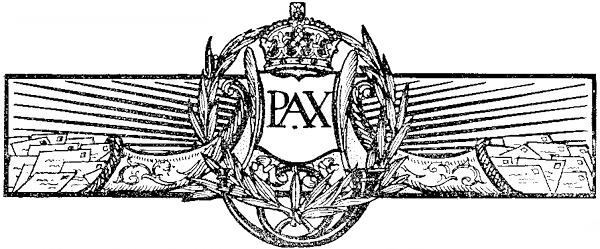Roman Provincias > Mauretania
Mauretania

Background
Roman Mauretania refers to the Roman provinces established in the region of northwest Africa known as Mauretania, roughly corresponding to parts of modern-day Morocco and Algeria. The region was inhabited by indigenous Berber tribes, with a history of contact with Carthaginians and other Mediterranean powers before Roman conquest. Here's an overview of Roman Mauretania:
Conquest and Formation:
Mauretania was initially divided into two kingdoms: Mauretania Tingitana in the west, and Mauretania Caesariensis in the east. Both kingdoms were client states of Rome before their annexation. In 40 CE, Emperor Caligula annexed Mauretania Tingitana after the death of its king, Ptolemy, while Mauretania Caesariensis was annexed by Emperor Claudius around 44-47 CE following the death of its king, Ptolemy's son. These territories were then organized into Roman provinces, with Tingitana and Caesariensis as distinct provinces.
Geography:
Mauretania was located along the Mediterranean coast of North Africa, to the west of the Roman province of Africa Proconsularis (modern Tunisia) and east of the Atlantic Ocean. The region was characterized by a varied landscape, including coastal plains, fertile river valleys, and mountainous terrain, particularly in the Atlas Mountains.
Urban Centers and Infrastructure:
The major cities of Mauretania included Tingis (Tangier) and Lixus in Mauretania Tingitana, and Caesarea (modern Cherchell) and Iol Caesarea (modern Cherchell) in Mauretania Caesariensis. These cities served as administrative, commercial, and cultural centers, boasting Roman architecture such as temples, forums, and baths. They were connected by a network of Roman roads, facilitating trade and communication.
Economy and Resources:
Mauretania was known for its agricultural fertility, producing grains, olives, grapes, and other crops. The region also had valuable mineral resources, including iron, copper, and lead, which were mined and exported. Trade flourished in Mauretania, both within the region and with other provinces of the Roman Empire. The ports along the Mediterranean coast facilitated maritime commerce with Rome and other Mediterranean cities.
Culture and Society:
The population of Mauretania was ethnically diverse, consisting of indigenous Berbers, Romans, Phoenicians, and others. Latin was the administrative language, but local languages such as Berber and Punic were also spoken. Romanization gradually influenced the culture and society of Mauretania, with Roman customs, laws, and religion introduced alongside indigenous traditions. Temples dedicated to Roman gods and goddesses were erected, alongside local deities and cults.
Legacy and Decline:
Roman control over Mauretania lasted until the decline of the Western Roman Empire in the 5th century CE. Following the Roman period, the region was conquered by various powers, including the Vandals and the Byzantine Empire. The legacy of Roman Mauretania endures in its archaeological sites, monuments, and cultural heritage, which provide valuable insights into the history of the region and its interactions with the broader Roman Empire and the ancient Mediterranean world.
Roman Provincias
Roman Provincias List
- Provincia Achaea
- Provincia Aegypti
- Provincia Africa Proconsularis
- Provincia Cottiae
- Provincia Maritimae
- Provincia Alpes Poeninae
- Provincia Arabia Petraea
- Provincia Armenia
- Provincia Asia
- Provincia Assyria
- Provincia Augustamnica
- Provincia Bithynia et Pontus
- Provincia Britannia Inferior
- Provincia Britannia Superior
- Provincia Britannia
- Provincia Byzacena
- Provincia Cappadocia
- Provincia Cilicia
- Provincia Corsica et Sardinia
- Provincia Crete et Cyrenaica
- Provincia Cyprus
- Provincia Dacia Aureliana
- Provincia Dacia
- Provincia Dalmatia
- Provincia Galatia
- Provincia Gallia Aquitania
- Provincia Gallia Belgica
- Provincia Gallia Lugdunensis
- Provincia Gallia Narbonensis
- Provincia Germania
- Provincia Germania Inferior
- Provincia Germania Superior
- Provincia Hispania
- Provincia Hispania Baetica
- Provincia Hispania Citerior
- Provincia Hispania Lusitania
- Provincia Hispania Tarraconensis
- Provincia Hispania Ulterior
- Provincia Iudaea
- Provincia Lycia et Pamphylia
- Provincia Macedoniae
- Provincia Mauretania
- Provincia Mauretania Caesariensis
- Provincia Mauretania Tingitana
- Provincia Mesopotamia
- Provincia Moesia
- Provincia Moesia Inferior
- Provincia Moesia Superior
- Provincia Pannonia
- Provincia Pannonia Inferior
- Provincia Pannonia Superior
- Provincia Pannonia Valeria
- Provincia Raetia
- Provincia Sicilia
- Provincia Sophene
- Provincia Syria
- Provincia Syria Palaestina
- Provincia Syria Phoenice
- Provincia Thracia